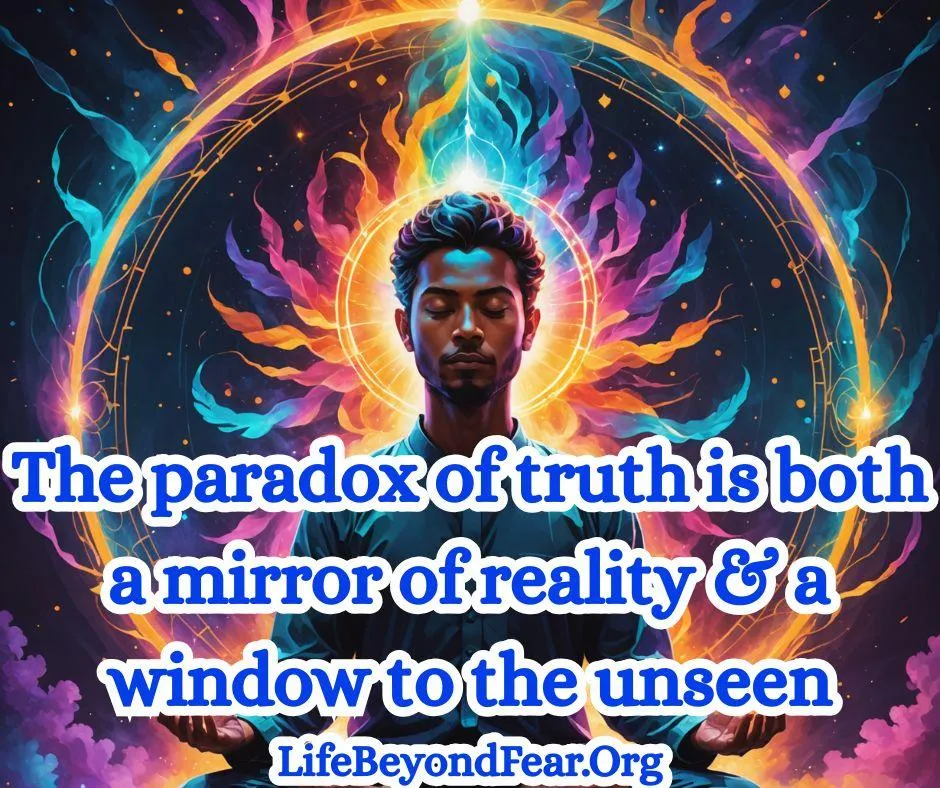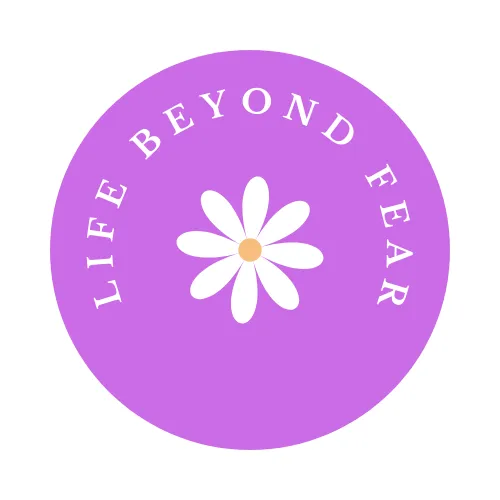There’s a whole world out there
See Newest Blogs

The Paradox of Truth: How AI Can Detect Liars and Teach Us Discernment
The Paradox of Truth: How AI Can Detect Liars and Teach Us Discernment
In a world where reality and illusion blur, the question arises: How can AI possibly detect liars now or in the future? Imagine a world where AI could scan the digital landscape, identifying falsehoods with the precision of a truth-seeking missile. Yet, as with all things in life, this too is a paradox. The very technology that can create convincing illusions can also become our greatest ally in discerning truth from deception.

The Duality of AI: Creator and Detector
AI's ability to generate false content, such as deepfakes or manipulated images, is both a marvel and a menace. It showcases the duality inherent in technology—the yin and yang, the light and dark. This duality challenges us to become better at discerning the false from the true, a skill more crucial than ever in our digital age.
The Threat and the Promise
The threat is real: anyone can be duped by sophisticated AI-generated content. However, the flip side—the paradox—is that AI can also empower us to become more discerning. By analysing patterns, detecting inconsistencies, and highlighting emotional coercion or manipulation, AI can act as a digital truth detector.
AI as a Teacher of Discernment
Imagine AI systems that flag potential falsehoods, providing context and evidence to support their claims. They could highlight propaganda, dissect false statements, and even analyse emotional undertones that suggest manipulation. In doing so, AI not only protects us from deception but also teaches us to recognise these patterns ourselves.
The Paradox of AI and Human Intuition
While AI can be a powerful tool, it is not infallible. The paradox lies in balancing AI's capabilities with human intuition. We must not lose faith in our own ability to discern truth, even as we leverage AI's strengths. By taking the high road and trusting in the light, we can ensure that truth prevails.
The Journey to Authenticity
Before we can effectively discern truth from falsehood in the world around us, we must first embark on a journey of authenticity and self-reflection. If we wish to navigate the complexities of deception, it is crucial to examine our own lives with honesty and integrity. Authenticity begins with acknowledging our own biases, fears, and insecurities, which can cloud our judgement and perception of truth.
Self-Reflection as a Foundation
Self-reflection is the cornerstone of authenticity. By taking a deep look at ourselves, we uncover the layers of conditioning and beliefs that may lead us astray. This introspective process involves questioning our motivations, examining our values, and aligning our actions with our true selves. When we are genuine and transparent, we create a foundation of trust, both within ourselves and in our interactions with others.
The Mirror Effect
There is a profound connection between how we perceive truth in the external world and how we embody it internally. If we don't want to be lied to or misled, we must first ensure that we are not deceiving ourselves or others. This requires a commitment to honesty in our thoughts, words, and actions. By being truthful in our own lives, we set a standard for the kind of interactions we expect from the world.
Cultivating Inner Truth
Cultivating inner truth involves embracing vulnerability and accepting our imperfections. It means allowing ourselves to be seen as we truly are, without pretence or facade. This authenticity fosters deeper connections and creates an environment where truth can flourish. When we are genuine, we inspire others to be the same, fostering a culture of honesty and integrity.
Integrating Authenticity into the Paradox
Incorporating authenticity into the paradox of truth adds a layer of depth to our understanding. It reminds us that the pursuit of truth is not just about identifying deception in others but also about embodying truth in our own lives. By aligning ourselves with authenticity, we enhance our intuitive abilities and become better equipped to discern truth from falsehood.
Embracing the Paradox
In embracing this paradox, we acknowledge that AI's role is not just as a detector of lies, but as a teacher of truth. It challenges us to look deeper, question more, and ultimately, trust in the light. As we navigate this complex landscape, we must remember that discernment is both an art and a science—a skill that AI can enhance, but never replace.
The Paradox of Life
In the end, the paradox of AI and truth is a reflection of life itself—a dance between light and dark, truth and illusion. By embracing this duality, we can harness AI's potential to illuminate the path to truth, while never losing sight of our own inner compass. Let us walk this path with courage, curiosity, and an unwavering commitment to the light.

Developing Intuition
Developing intuition is a vital skill in discerning truth from falsehood. Here are detailed practices to enhance your intuitive abilities:
1. Mindfulness Meditation
Purpose: Cultivate present-moment awareness and clear mental clutter.
Practice: Dedicate 10-20 minutes daily to sit quietly and focus on your breath. Allow thoughts to come and go without attachment. This practice sharpens your awareness, making it easier to sense subtle truths and deceptions. Over time, mindfulness enhances your ability to notice inconsistencies and underlying truths in conversations and situations.
2. Intuition Journalling
Purpose: Connect with your inner voice and recognise intuitive insights.
Practice: Keep a journal where you record intuitive hunches, dreams, and gut feelings. Reflect on these entries over time to identify patterns and validate your intuitive insights. This practice helps you track the accuracy of your intuition and build confidence in trusting your inner guidance.
3. Body Awareness Exercises
Purpose: Tune into physical sensations as indicators of truth or falsehood.
Practice: Practice body scans or engage in activities like yoga. Notice how your body reacts to different situations or information. Genuine truth often feels light and expansive, while falsehood may feel heavy or constrictive. By becoming more attuned to your body's signals, you can better discern truth from deception.
4. Visualisation Techniques
Purpose: Strengthen your ability to visualise and interpret intuitive signals.
Practice: Visualise scenarios where you successfully discern truth from falsehood. Imagine the feelings and sensations associated with each. This practice enhances your ability to trust and interpret intuitive cues. Visualisation can also help you mentally rehearse situations where intuition plays a key role.
5. Practice Active Listening
Purpose: Enhance your ability to detect nuances and underlying truths.
Practice: Engage in conversations with full attention, focusing on both verbal and non-verbal cues. Pay attention to tone, body language, and inconsistencies in the narrative to discern underlying truths. Active listening fosters deeper understanding and helps you pick up on subtle signals of authenticity or deception.
6. Spend Time in Nature
Purpose: Connect with natural rhythms and enhance intuitive clarity.
Practice: Spend time outdoors, observing the natural world. Nature has a calming effect that can help clear mental noise and strengthen your intuitive connection. The tranquility of nature allows you to tune into your inner voice and gain clarity on complex issues.
7. Engage in Creative Activities
Purpose: Stimulate the right brain, which is associated with intuition and creativity.
Practice: Engage in activities like painting, writing, or music. These activities can help you access intuitive insights by bypassing the analytical mind. Creativity opens pathways to new perspectives and enhances your ability to think outside the box.
8. Trust Your Gut Feelings
Purpose: Develop confidence in your intuitive abilities.
Practice: When you have a strong gut feeling, take note of it and act upon it when appropriate. Reflect on the outcomes to build trust in your intuition. Trusting your gut helps reinforce the connection between intuition and decision-making.
9. Seek Solitude and Reflection
Purpose: Create space for introspection and intuitive insights.
Practice: Spend time alone in quiet reflection. Use this time to process experiences and listen to your inner voice without external distractions. Solitude allows you to delve deeper into your thoughts and emotions, fostering greater self-awareness.
By incorporating these practices into your life, you'll enhance your intuitive abilities and become more adept at discerning truth from falsehood. This journey of self-discovery and intuition will empower you to navigate the complexities of "The Paradox of Truth" with greater clarity and confidence.

Copyright ©LifeBeyondFear.Org. All Rights Reserved.
Unlock the secrets to improving relationships at work, at home, and most importantly, with yourself. Discover the transformative power of meaningful connections and self-understanding.
